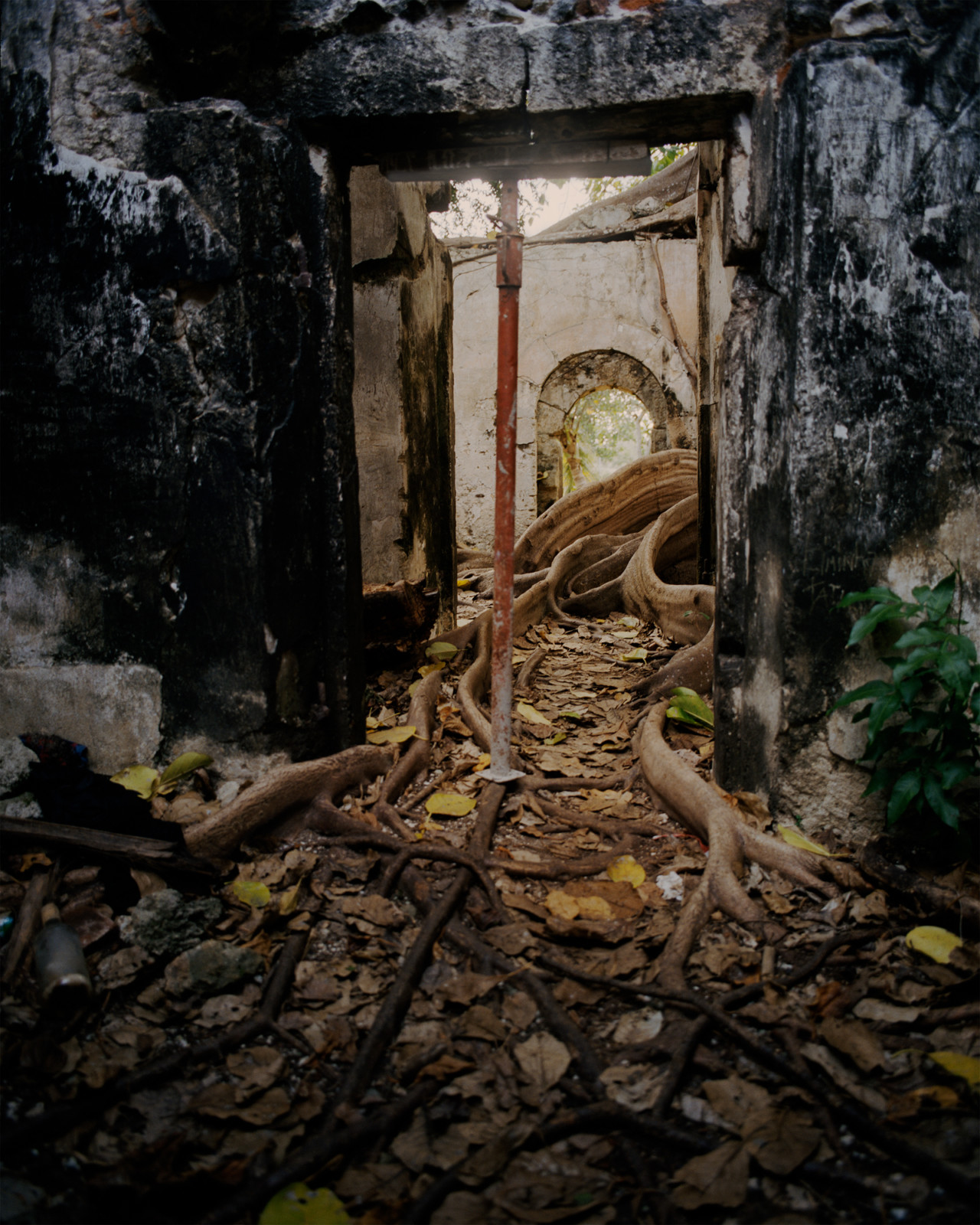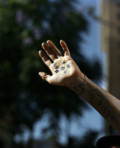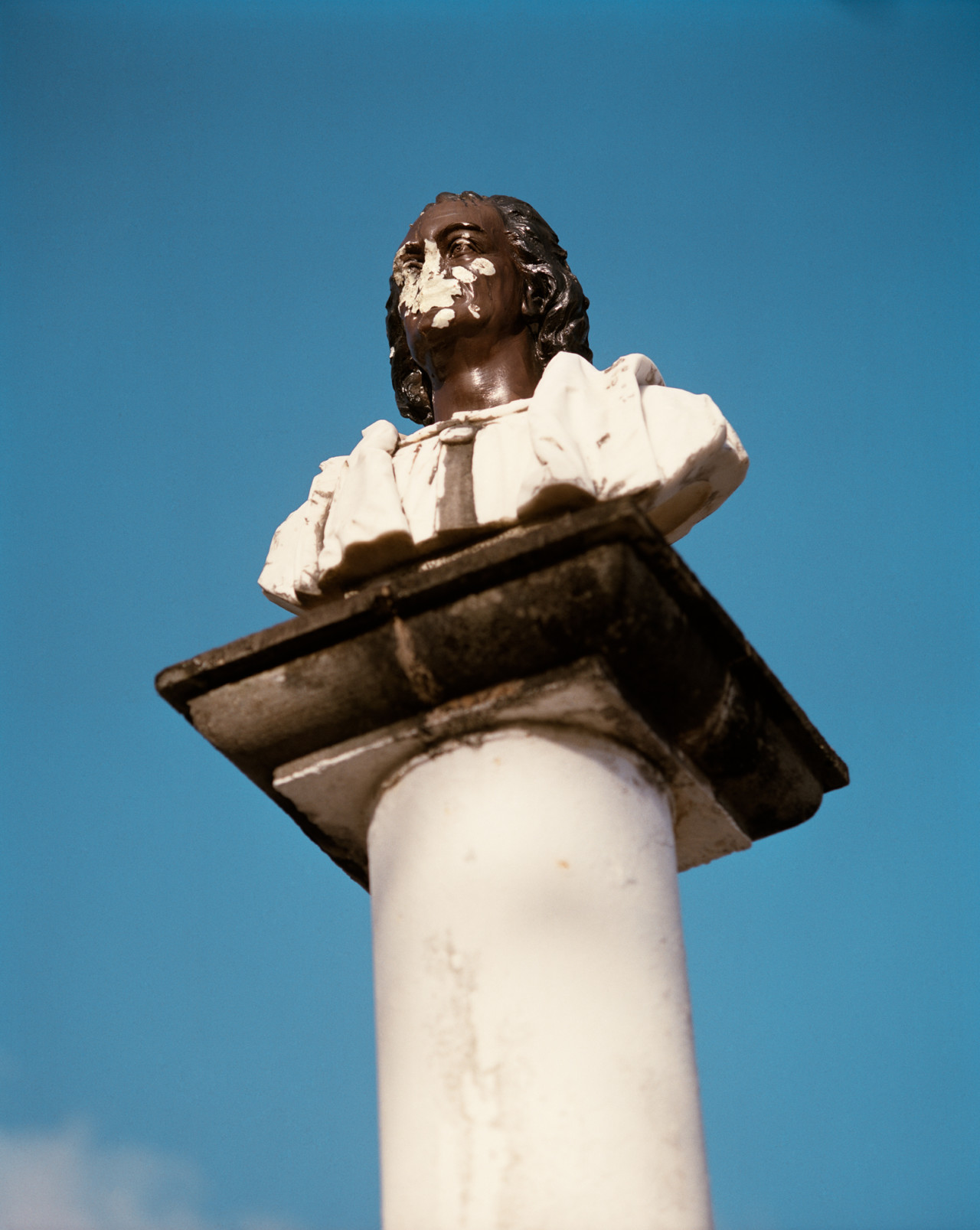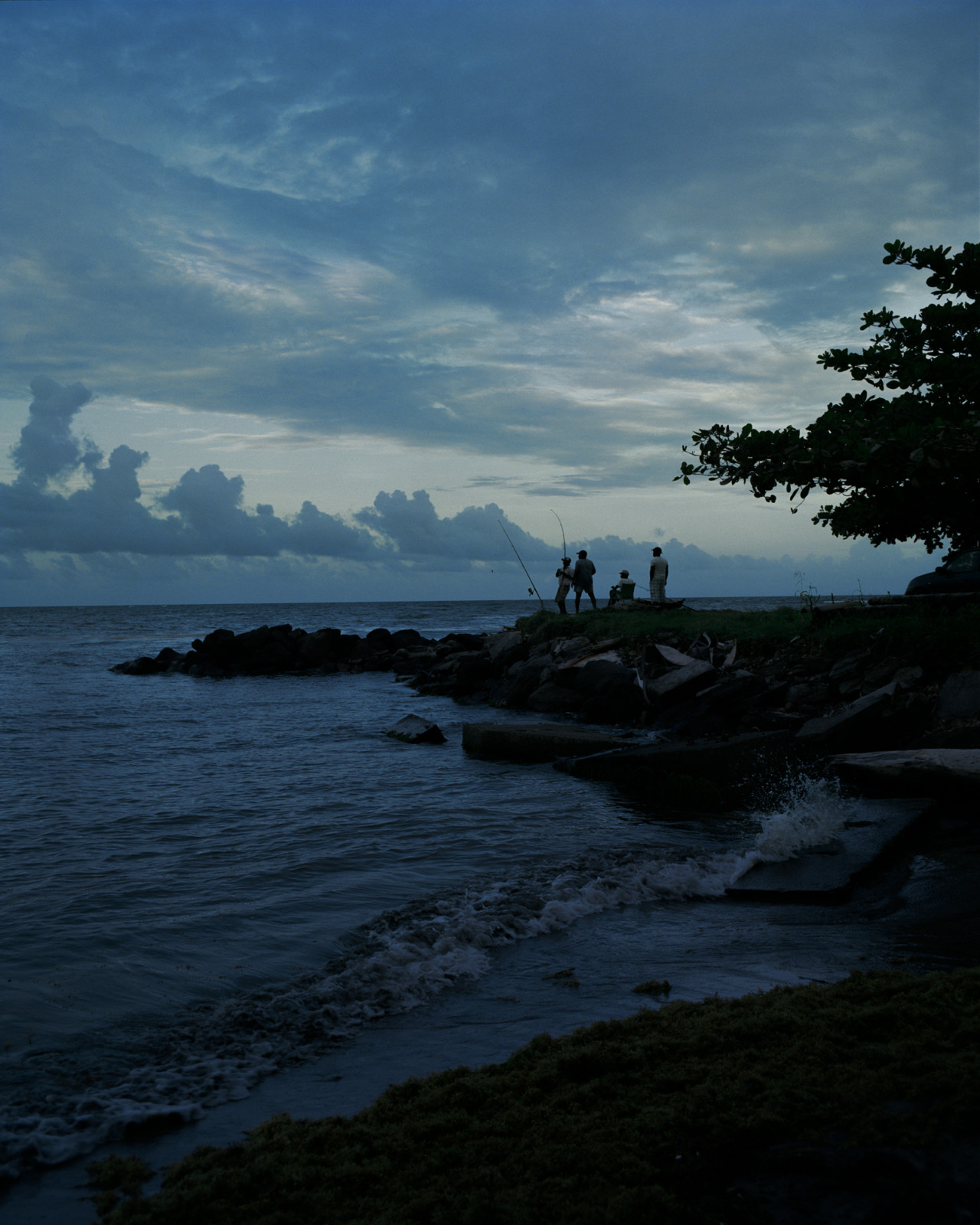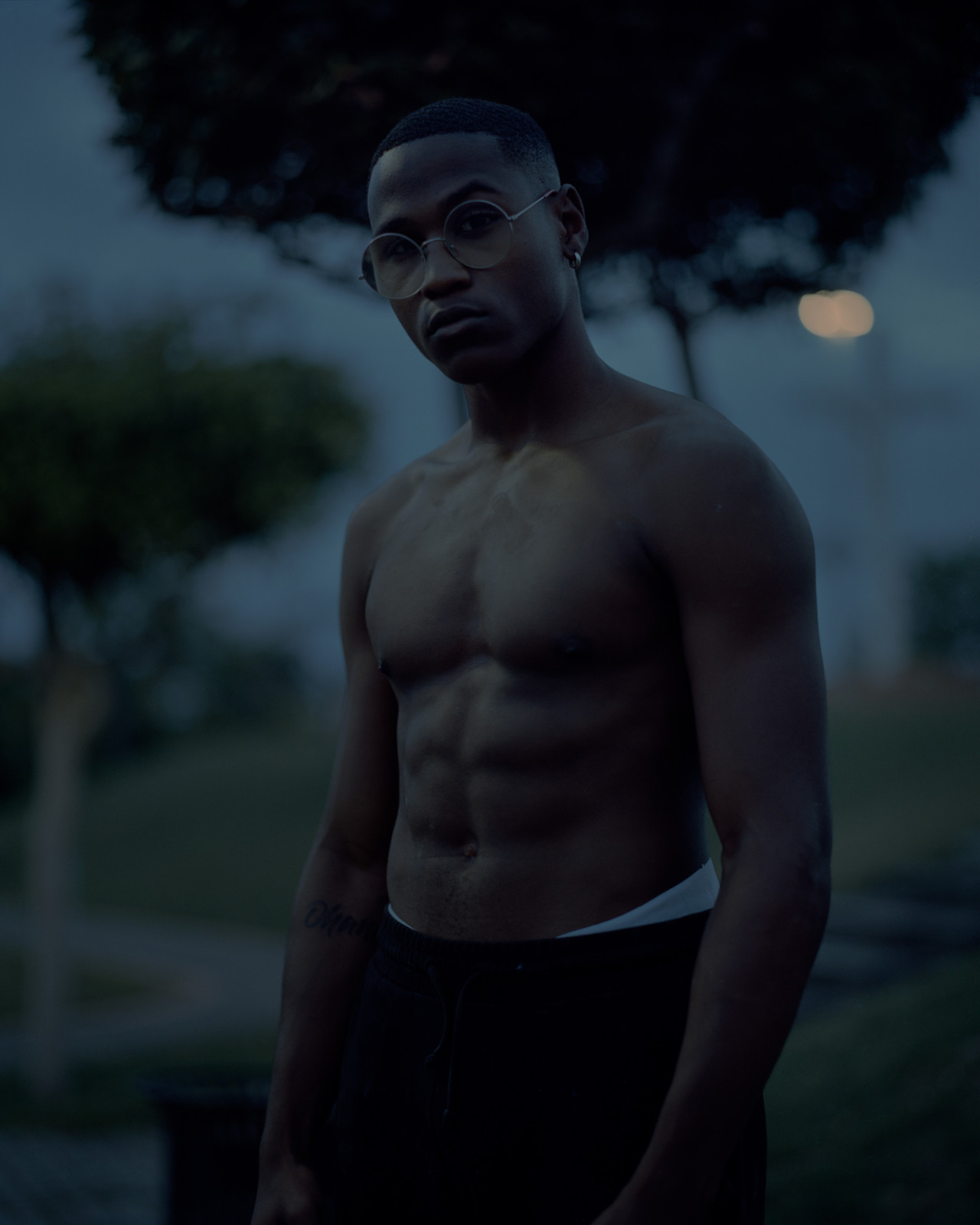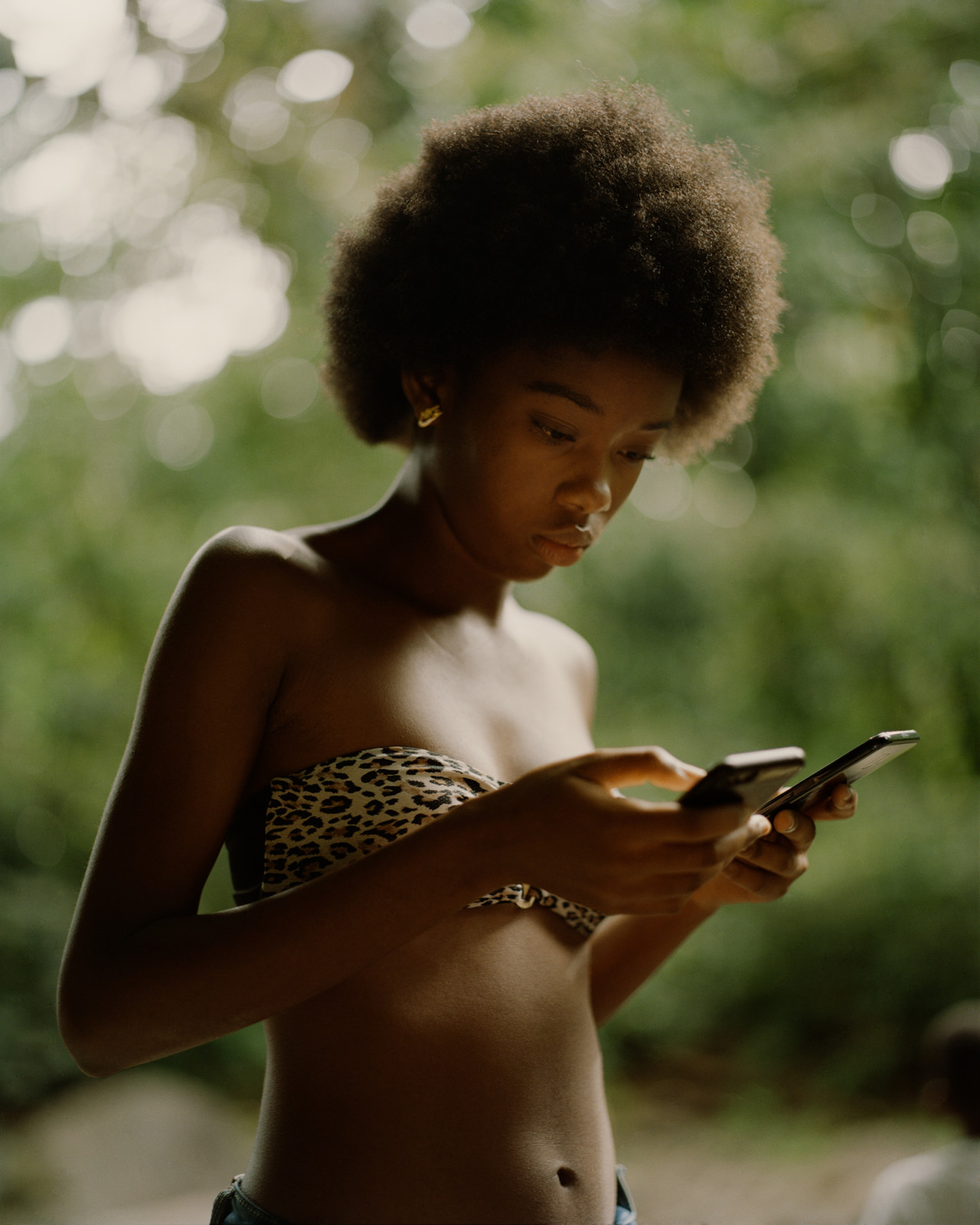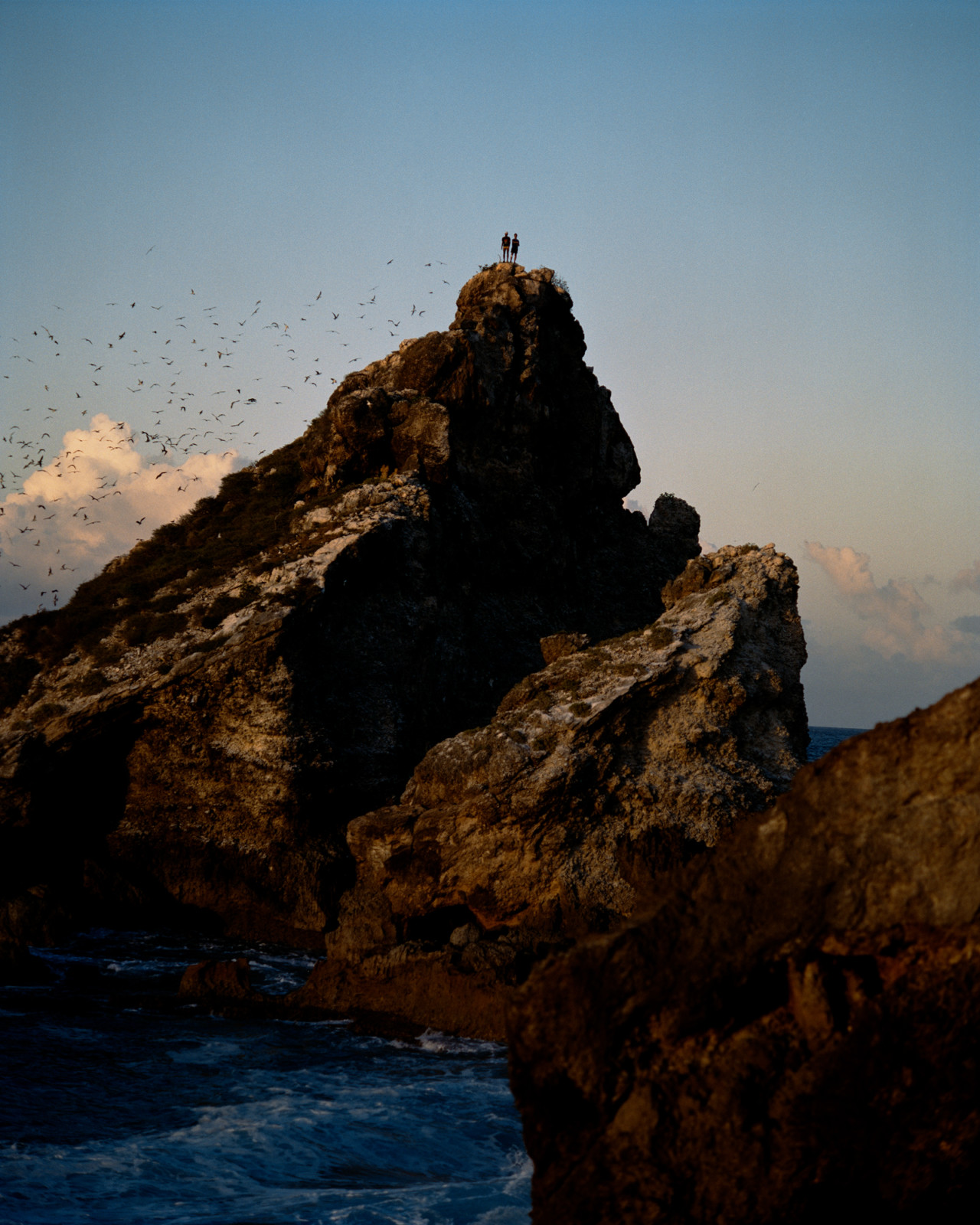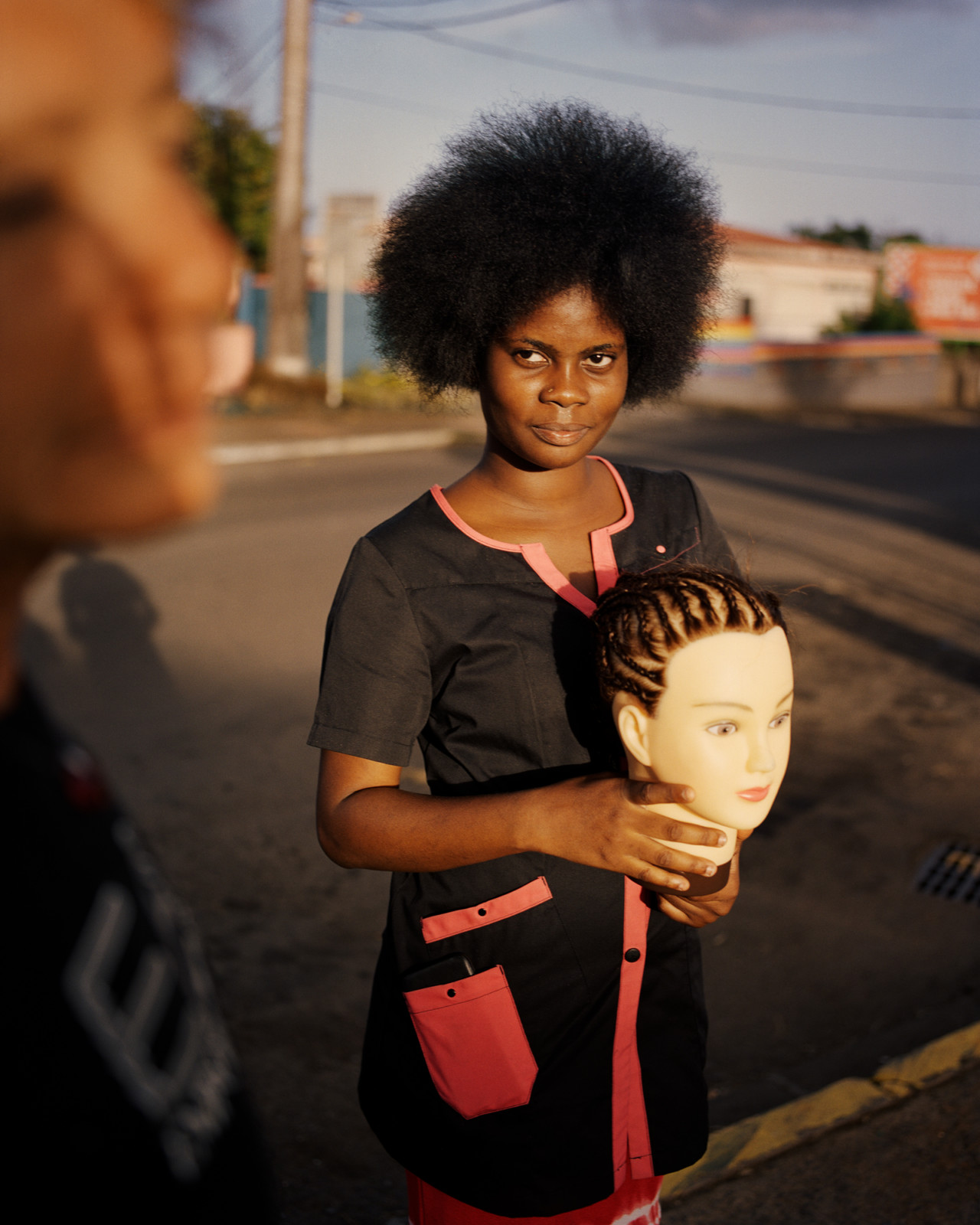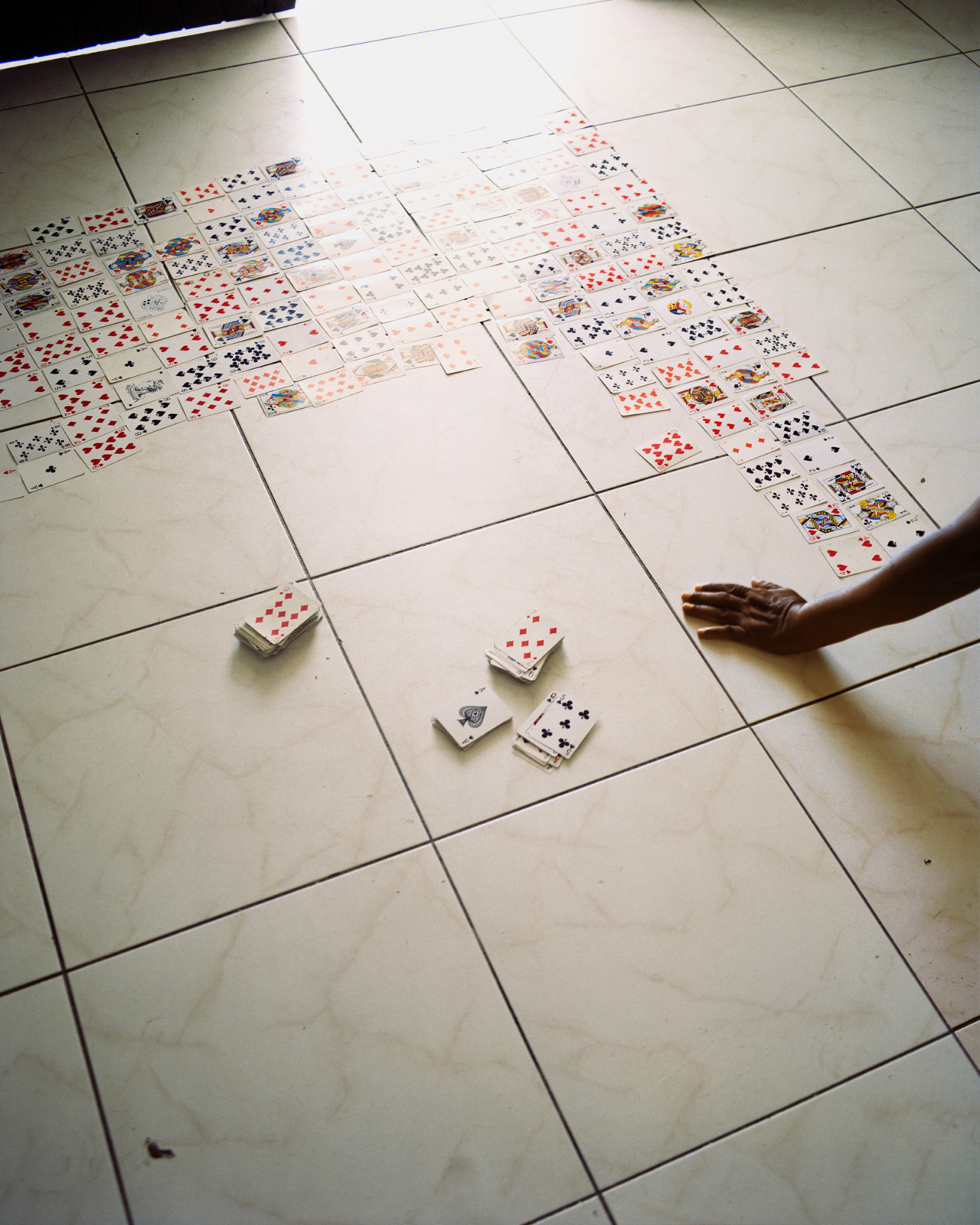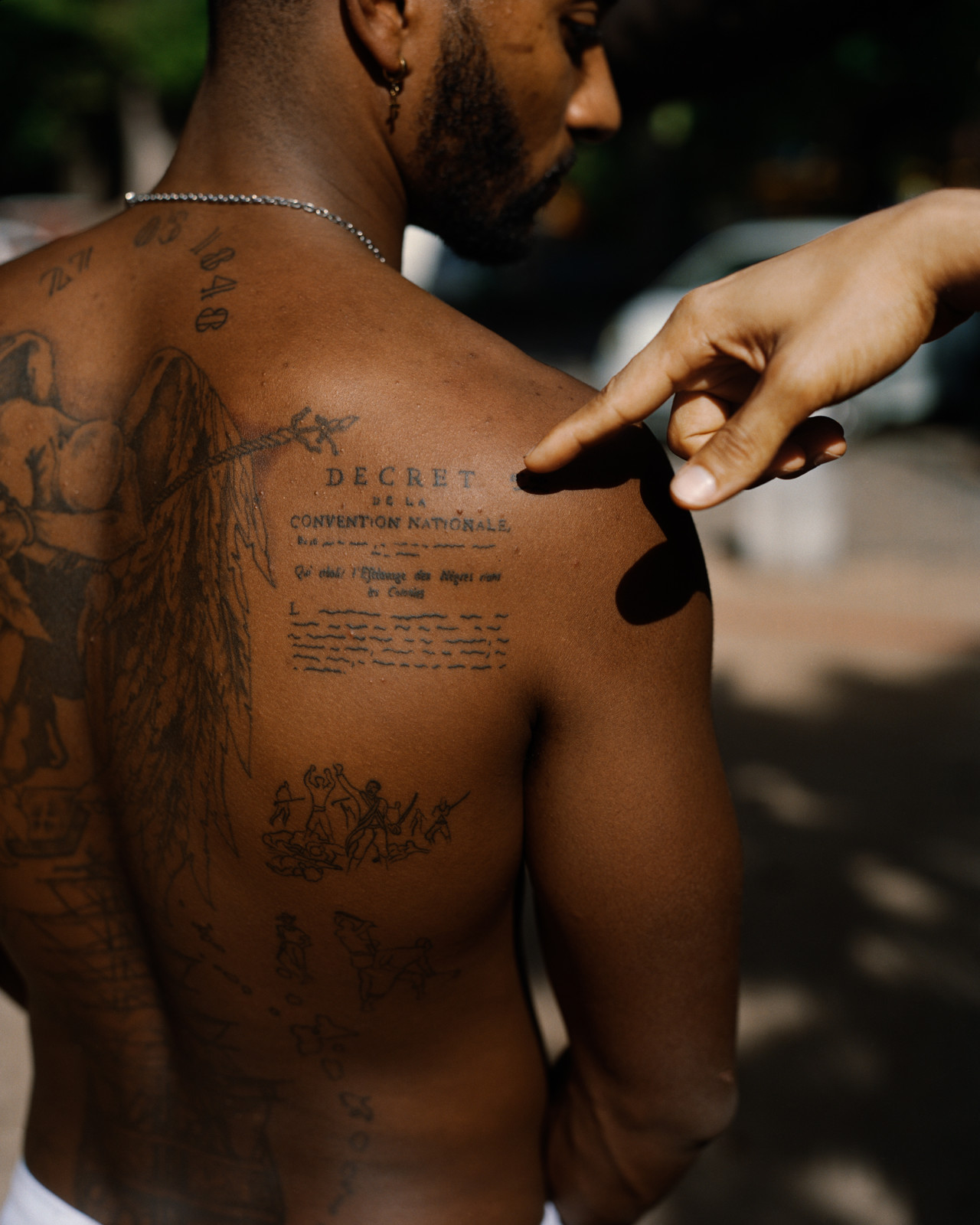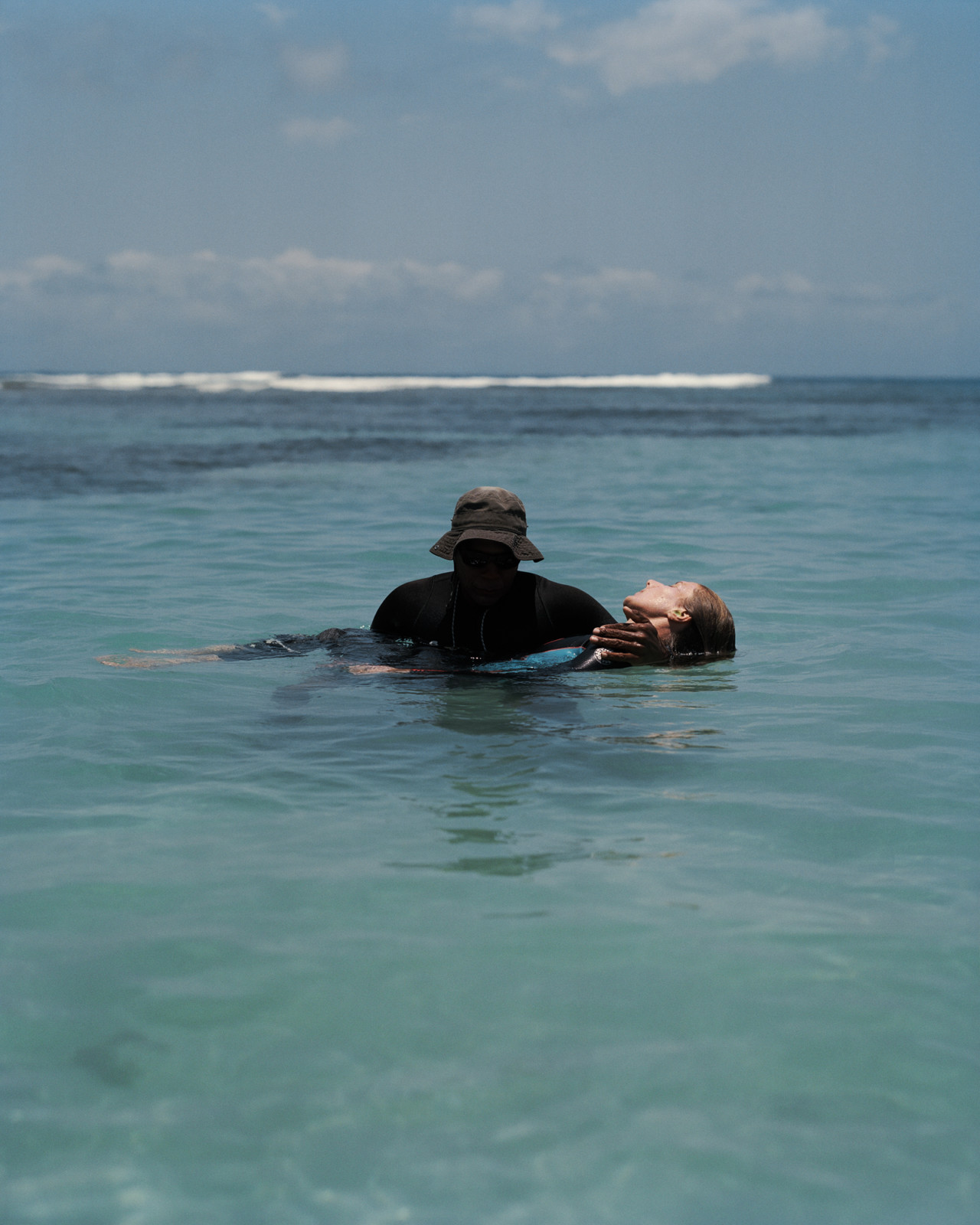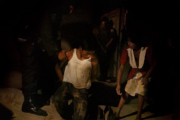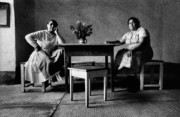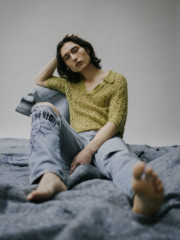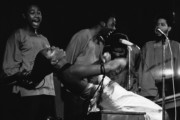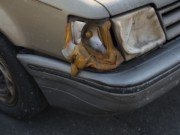Let the Sun Beheaded Be
Gregory Halpern discusses representation, portraiture, and poetry in the context of his book about the Caribbean archipelago of Guadeloupe, currently on view at the ICP in New York
In 2018, Gregory Halpern won Immersion, a French-American Photography Commission organized by the Fondation d’enterprise Hermès which invites an American photographer to make new work in France, or vice versa. Halpern chose to work in Guadeloupe, a Caribbean archipelago which was colonized by the French in 1635 and is now a French overseas region. Inspired, in part, by Aimé Césaire, a French poet, author and politician from nearby Martinique, he made a new photographic series titled Soleil cou coupé or Let the Sun Beheaded Be, published as a photobook by Aperture in 2020.
Now, in November 2023, the series is on view at the ICP in New York as part of Immersion, an exhibition that draws together the work of Halpern, Raymond Meeks and Vasantha Yogananthan. The show runs until January 8, 2024.
“I was initially drawn to Guadeloupe because of its contradictions — its surreal beauty as a tourist destination in spite of its painful history under the legacies of colonialism and slavery,” he writes in a post about the exhibition. “That tension was a ‘guide’ for me in making this work, along with the poems of Aimé Césaire. This project in general was a deeply humbling experience; I tried to work with humility—as an outsider, a white man and former tourist there.”
Here, in an interview from 2020, Halpern discusses the project with photography writer and curator Diane Smyth.
Why did you want to take photographs in Guadeloupe?
The commission was to select anywhere in France and make work, and I was interested in looking at France through the lens of Guadeloupe, as a former colony. I wanted to re-consider what images, what locations, and what people come to mind when one thinks of “France.”
You’ve mentioned the history of slavery is more evident in Guadeloupe than the US. Could you say more?
Relative to the US, the history of slavery and colonialism is everywhere you look in Guadeloupe. It’s part of the culture and conversation, and visually it’s represented frequently – beginning with spray-painted murals, which are a big part of Guadeloupean street culture. Then there is the centrality of representing slavery during Carnival, when young men walk the streets cracking bullwhips, the same kind infamously used by slave owners. The history of slavery is also an integral part of the official state narrative. There are countless memorials throughout Guadeloupe about slavery and colonialism, and many monuments to the black leaders and politicians who resisted. The most impressive structure in the city is Mémorial ACTe, a truly state of the art museum and cultural center dedicated to the memory and history of the slave trade.
But holocaust memorials and museums are easier for Americans to build and visit, perhaps because the narrative around them is easier for us to swallow. We can acknowledge that evil because we didn’t invent it and fought to stop it. Slavery is harder. Americans didn’t invent it per se, but we made it flourish like nowhere else. Our nation, and its success, was built on the blood of enslaved people.
One of the early images in Soleil cou Coupe shows a statue of Columbus that’s been defaced. In light of recent events in Europe and the USA it seems prescient, but is that a very Eurocentric reading?
These questions have been around for a long time but are just bubbling to the surface for Westerners. The Columbus bust fascinated me as a document of this moment. First his skin had been painted brown, as an act of resistance; later, someone had taken a hammer to his face.
Columbus was the perfect colonizer, a vicious predator masquerading as an ambassador of civilization. In April 1493, in a letter to one of his patrons, Luis de Santangel, Columbus described the Taínos, an indigenous people of the Caribbean: “Of anything they have, if it be asked for, they never say no, but do rather invite the person to accept it, and show as much lovingness as though they would give their hearts.” Later in the letter, Columbus writes, “their Highnesses may see that I shall give them as much gold as they need …. and slaves as many as they shall order to be shipped.”
Today, it’s hard to wrap my head around the fact that Columbus was etched onto my childhood brain as a hero, that a bust could have been erected anywhere, let alone in Guadeloupe. It’s really terrifying to think of the power of certain narratives when they serve the interest of capitalism and when they are officially adopted by the State.
"The more I’ve thought about photography’s slippery relationship to “truth,” the more fascinated I’ve become in how photographic precision and Surrealism are not contradictory"
-
What attracted you to Aimé Césaire’s work?
The poetry drew me in at first, but his biography is equally compelling. Not only was he an internationally known poet and the founder and editor of the influential literary journal Tropiques, he also served as mayor of Martinique’s Fort-de-France for fifty years. He also helped found the 1930s Négritude movement in French literature, which aimed to cultivate “Black consciousness” across Africa and its diaspora, and as a teacher, he inspired Martinique’s two other most famous writers – Frantz Fanon and Édouard Glissant. So in a way, it felt impossible to work in Guadeloupe without engaging with him.
Soleil cou coupé really moved me. I love the way he describes heat, smells, colours, desire and death. And I share his interest in confrontation, in talking about what’s uncomfortable. His poems describe a mystical, hallucinatory beauty just as often they reference pain, an insuppressible anger, and the unseemly aspects of life and death—sweat, blood, shit, semen, birth and physical violence. I was intrigued to consider how that provocation, that embrace of what’s revolting and blasphemous, that refusal to clean up, was an act of resistance, especially in the context of the “civilizing” force of the colonizer.
Did Césaire’s work with Surrealism influence you?
For Césaire, Surrealist poetry was a tool with which to liberate one’s thinking from traditional colonial hierarchies. A literal revolution begins with a revolution of the mind, and Surrealism could be used to reimagine structures of power and oppression. In a 1967 interview with Haitian poet René Depestres, Césaire stated, “Surrealism interested me to the extent that it was a liberating factor.” The argument has been made that by embracing Surrealism, Césaire and others within the Négritude literary movement actually redeemed Surrealism from what could be seen as its Colonialist impulses.
Over the years I’ve become less interested in documentary and more interested in the space between fiction and non-fiction, which sometimes feels like Surrealism to me. It became most obvious when I was working on ZZYZX, which starts with contemporary Los Angeles but sort of builds a semi-fictional world out of the city. That interest has continued, and the more I’ve thought about photography’s slippery relationship to “truth,” the more fascinated I’ve become in how photographic precision and Surrealism are not contradictory. Andre Breton argued that Surrealism’s goal was to “resolve the previously contradictory conditions of dream and reality into an absolute reality, a super-reality.”
Can Surrealism be critiqued for its use of non-Western art?
Yes. The problem begins with European Surrealists sometimes using “tribal art” pieces, particularly African sculptures, as “exotic” inspiration, which were taken out of context and invested with values considered lacking in Western civilization. As Klaus-Peter Köpping writes, “exotic art production was perceived as being close to the origins of human creativity and a direct expression of emotive and psychic states.”
But the Surrealist movement’s roots are also in anti-colonialism, which explains some of the affinity with Césaire. In 1925, the Paris Surrealist Group and the extreme left of the French Communist Party drew together in support of Abd-el-Krim, leader of the Rif uprising against French colonialism in Morocco. They actively called for the overthrow of French colonial rule, and the same year the Paris Surrealist Group announced: “We profoundly hope that revolutions, wars, colonial insurrections, will annihilate this Western civilization whose vermin you defend even in the Orient.”
What happens when Césaire inspires a white Westerner, I’m not sure. At worst, he is appropriated and even neutralized, the bite and resistance taken from him. At best, he educates us, shames us, and helps us rethink dominant, Western, white-supremacist narratives. I went into the project envisioning this book as an homage to him but whether I, a white outsider with relative privilege, have any business paying homage to Césaire is another question. It’s something I’ve been struggling with.
You took three trips to Guadeloupe, the longest of which lasted two months. Do you consider you got to know the place, or were you still an outsider?
I was, and always will be, an outsider in Guadeloupe, and the images have to be read that way. It’s tempting for photographers to believe they can work their way into the place or perspective of an insider, but not kidding ourselves about that is important.
How did you negotiate photographing people in Guadeloupe?
I always try to talk to people first. I’m most comfortable with that approach, and for me, it just works better in terms of making everyone involved more comfortable. I’m very direct. I’d begin with a simple explanation, and then expand on the description of the project depending on how interested they were. At first, I would explain as best I could that I was an American photographer working on a book of photographs about Guadeloupe, but that I was interested in the island’s history more so than the tourism industry. At that point, many would politely decline but more often than not, peoples’ interests were piqued, and sometimes, language permitting, a long conversation would follow. I would elaborate, explaining perhaps that Aimé Césaire’s poetry was an inspiration, or that I was interested in Guadeloupe’s history as it related specifically to slavery and colonialism. I often spoke honestly about how it was a struggle for me to fully understand and engage with some of these issues as an American white man. But every conversation was completely different and depended on the interests of the person I was photographing. Sometimes I would talk about my children, or how weird it is to approach strangers with a camera — I try to be open and vulnerable and say what’s on my mind, because I know consent requires great vulnerability on the part of the sitter, and that it is a great act of generosity. Lastly, I always give everyone a business card, and explain that if they get in touch, I’ll send them images for free. It’s a small gesture, and people don’t always take me up on it, but it often feels appreciated.
Photographing people is almost always strange and awkward, but also wonderful and unpredictable. I get nervous because I’m actually quite introverted, I have to work up the guts. When I’m rejected, it’s devastating — but when it goes well, and when there is an unexpected connection, there is the rush of a sense of something beautiful and hopeful.
In his essay Discourse on Colonialism, Césaire asserts that Hitler “applied to Europe colonialist procedures.” Your own family left Hungary in the 1920s to escape anti-Semitism, did you think about that while you were making work in Guadeloupe? Do current questions around who photographs who simplify the positions we find ourselves in?
I was struck by that passage too. Césaire goes one step further, arguing that the Europeans essentially tolerated “Nazism before it was inflicted on them, that they absolved it, shut their eyes to it, legitimized it, because, until then, it had been applied only to non-European peoples; that they have cultivated that Nazism, that they are responsible for it.” Much of my family was killed in the Holocaust. My great Aunt Olga, who is 92 today, was sent Auschwitz when she was fifteen years old. And I’m alive today because my grandfather fled Hungary just before the war and immigrated to the US illegally, hiding in the bottom of a boat. All of that has deeply influenced me, and how I see the world, for better or worse.
As for whether current questions around who photographs who “simplify the positions we find ourselves in,” that’s a hard question. But maybe that’s exactly how it should be right now? For too many centuries, it’s been the other way round, where the identity positions of artists/authors excluded them from the inner circles if they were black, indigenous, people of color, or women, no matter how good the work.
What do you make of the questions around representation?
That’s a big question. But I suppose real progress would be if we could learn to make photographs outside our demographic, without buttressing white supremacy, without generalizing or reinforcing negative stereotypes. But white people have a lot of learning to do about how ingrained our racism is, and about how rigged our systems are, before we get there.
"I’m always interested in what attracts me visually, but the subject also needs to convey meaning or significance, and in some cases, the subject matter itself may provide a sense of beauty. If an image is formally beautiful but lacks content, then it is just emptiness masquerading as redemption, and for me is a low form of imagery"
-
How much did you want to include images with a specific meaning, compared to images that visually attracted you? For example, one shot features a man with a tattoo of the Decree of the National Convention abolishing slavery.
I’m always interested in what attracts me visually, but the subject also needs to convey meaning or significance, and in some cases, the subject matter itself may provide a sense of beauty. If an image is formally beautiful but lacks content, then it is just emptiness masquerading as redemption, and for me is a low form of imagery. If the image has significant content but has no sense of poetry or beauty, then it is simply a document, which, at least for this project, I was uninterested in. The space in the middle, for me, is compelling. To me, a successful image can only suggest a meaning. The hope is to find something outside of yourself that resonates internally with you.
To fully appreciate this tattoo, you have to know a little of the history of slavery in Guadeloupe. It’s a particularly painful history, in part because slavery was re-instituted after its first abolition. In 1794, the British invaded Guadeloupe, which was then controlled by France. The French were able to fight the British back, partly because they enlisted enslaved people to fight with them by promising to abolish slavery if they won. Later that year they appeared to keep their promise and abolished slavery. But eight years later, in 1802, they reinstated slavery under the orders of Napoleon. Slavery was not officially abolished in the French empire until 1848.
Have people in Guadeloupe seen the photographs?
Most people in the book have seen the pictures. I want Guadeloupeans to see the work, but of course I’m also anxious about it. My intention was not to make postcards, though nor was it to make the place look bad. My intention, and my responsibility as an artist, as I see it, is to inform myself, but also to embrace my own subjectivity, and naturally, when an artist works that way, some people will feel they have misrepresented or misunderstood the subject. The artist’s only usefulness, as I see it, is to filter the subject through the idiosyncrasies of their own vision, but there are also many risks in that.
The cover of the book features the old flag of Guadeloupe, which harks back to the colonial era, why is that?
One interpretation of Césaire’s title Soleil cou coupé is that it references a sunset — specifically the moment when the horizon bisects or “beheads” the sun and casts blood-red streaks in the sky. Another interpretation is that it refers to a symbolic act of violence against the sun — a source of whiteness — as an act of resistance to colonial power. Clément Cheroux also wrote a beautiful essay for the book, which among other things, addresses the symbolic significance of the guillotine with relation to photographic and French/Guadeloupean history. So Hans Gremmen, the book’s designer, took all this into consideration and came up with the incredible idea of running each finished book through a guillotine. He had the bottom edge of each book literally lopped off, thereby cutting/beheading the sun.




